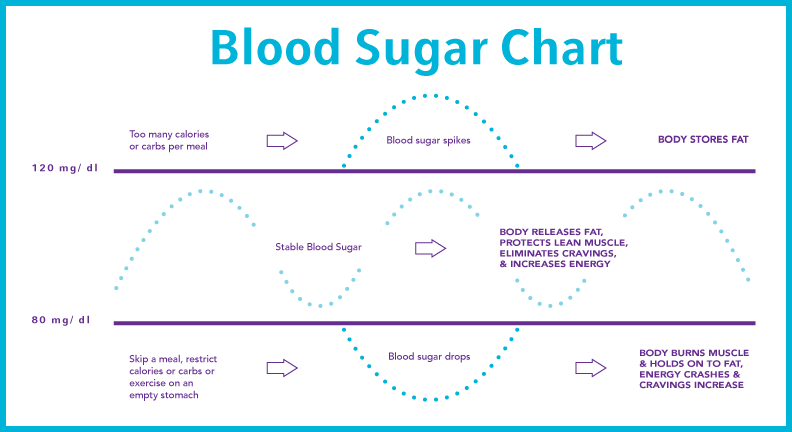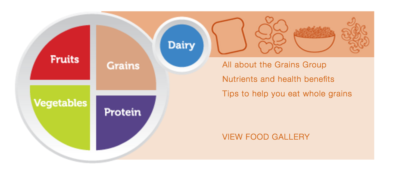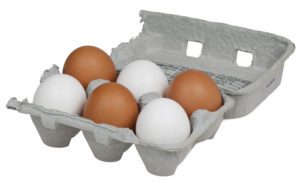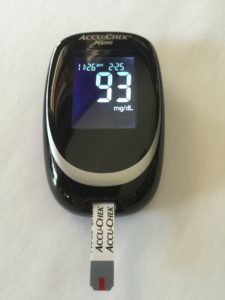Lately, there’s a lot of talk about blood sugar stabilization. This is especially true for people who are pre-diabetic or already diagnosed with diabetes 2. However, what most don’t know, is that blood sugar stabilization also matters for individuals who are nowhere near (pre) diabetic. We’ll break blood sugar stabilization into layman’s terms, tell you what’s what and how you can get the best results for yourself. This article is stacked full of information you can use and apply right away!
The basics
Your body works best when your blood sugar levels are between 80 mg / dl to 120 mg /dl. Under 80 mg / dl your body harvests your muscles for energy and above 120 mg / dl your body stores fat.

Blood Sugar Chart
Let’s break this into layman’s terms
- Blood sugar/blood glucose – Glucose is the sugar in your bloodstream and your body’s preferred source of fuel.
- Insulin – Your pancreas is the production hub of insulin. Insulin is a hormone that’s moves glucose from your bloodstream into the cells of your body. From there, your body burns glucose for energy. The delivery of glucose is ongoing 24/7, but depends on a finely tuned balance. You don’t want too much glucose in your bloodstream, but also not too little. This is where the 80 – 120 rule comes in play. Too little? You burn through muscle tissue for energy. Too much and your body can’t burn it all, which is where you start storing fat.
- Insulin resistance – This is your common cause for Type 2 Diabetes. If you’re overeating on carbs, with only limited amounts of good fats and protein, your blood sugar spikes beyond 120. Your pancreas goes into ‘panic mode’ and produces insulin to shuttle your glucose from your bloodstream into your body cells. Eventually, your pancreas’ overproduction leads to insulin resistance, where your pancreas throws its ‘hands in the air’ knowing that it can’t overcome your eating habits. Yet, not all is doomed! Get your diet and exercise in check and your Type 2 Diabetes can be reversed!
- Glycogen – Not all your glucose makes it into the cells of your body. Some of it will be discarded. This is where your liver works as ‘backup plan’, converting your glucose into glycogen. Glycogen is kept ‘in storage’ and utilized overnight or in-between meals. It’s your body’s attempt to regulate blood sugar levels to in-between 80 – 120 (it’s that magic scale again). The enemies of your glycogen storage are (chronic) stress and/or hormonal imbalances. Both can deplete your glycogen storage, which will eventually lead to your blood sugar going under the 80 mg / dl mark.
- Hyperglycemia – It is normal and expected to have a spike in blood sugar, especially after you eat. The spike is determined by what and how much you eat. There’s a distinct difference between eating a grilled chicken breast or a succulent piece of chocolate cake. Hyperglycemia depicts chronically high blood sugar, which will eventually lead to Type 2 Diabetes or worse.
- Hypoglycemia – Going back to your glycogen storage, which is intended to keep your blood sugar balanced in the ‘off hours’, and can be depleted through stress and/or hormonal balances, Hypoglycemia is the opposite of Hyperglycemia. Hypoglycemia stands for ‘low blood sugar’, which can also be a result of your nutrition being out of balance. A low fat meal paired with high-carb content, can produce hypoglycemia.
OK…but how do you keep all this in balance now?! – Here are your 9 ways
(the secret sauce is a blend of nutrition and exercise)
You can’t out-train a bad diet, but you’ll also never achieve 100% of your potential by just dieting.
Let’s clear up a common misconception first!
The (erroneous) FDA food pyramid, which has recently been replaced with the “Food Plate”, has successfully conditioned us to believe that we have to have an equal amount of carbs from grains, as we do calories from protein sources. Add to it that the FDA wants us to eat an equal serving size of Fruits and Vegetables, which are also loaded with carbs, and we’ll only have one source that doesn’t spike your blood sugar beyond 120 mg / dl: Protein.
protein sources. Add to it that the FDA wants us to eat an equal serving size of Fruits and Vegetables, which are also loaded with carbs, and we’ll only have one source that doesn’t spike your blood sugar beyond 120 mg / dl: Protein.
The problem with the “Food Plate” is in the fact that carbs do come from grains, but also fruits and vegetables. Essentially, the FDA recommends that we ‘triple up’ on carbs on every plate. Granted, not all carbs are alike, yet in the end, a carb is a carb, and when it comes to your blood sugar levels, that matters. Although, carbs from grains metabolize differently than carbs from fruits and vegetables and F &V are usually also carrying antioxidants and fibers, which are important for your digestion. However, there’s a little ‘golf clap’ for the FDA to finally having abandoned the old food pyramid and having come closer to realistic nutrition – yet, in the end, they are still far from accurate.
The following 10 points will clear all that up and get you on a path to nutrition that will contribute to your blood sugar stabilization.
1. (Healthy) Fats are NOT the enemy!
There’s a big distinction between healthy fats and unhealthy fats. Healthy fats, such as the fats from nuts, seeds, avocados, etc. slow down how your body absorbs glucose into the bloodstream. Through the slowing-down, comes the prevention of ‘sugar highs’ and ‘sugar crashes’, or as you likely have experienced in the past, the 2 p.m burnout. The afternoon slump is a direct result of your body experiencing a sugar crash. Healthy fats balance your blood sugar throughout the day, resulting in your system being able to maintain balanced energy throughout your day. Healthy fats will provide a feeling of satiation, while carbohydrates will not. Remember the last time you had fast food, and you were hungry again one-hour later? Loaded with carbs and not enough healthy fats.

The dietary market is full of recommendations. Among those, are ‘low fat’ diets, which advocate to cut down on fat, replacing it with carbohydrates. Inevitably, your blood sugar will spike, you’ll come down crashing, and to bring your energy back to functional levels, within the 80 – 120 range, you’ll find yourself eating again. However, what you’re eating to bring yourself back up, are more carbs and sugars. You’re in the middle of a self-destructive carb cycle.
Which fats should you avoid? In a nutshell, pass on all fats that are produced through manufacturing. This includes soybean oil, sunflower oil, corn oil, margarine. Besides the fact that these fats are bad fats, they are also supporting internal inflammation.
Which fats should be your go-to fats? Avocado oil, coconut oil, cold-pressed olive oil, cold pressed pumpkin seed oil, tallow, lard, eggs, etc. Basically, fats that are ‘natural’ and have been around, without manufactured processing, for thousands of years.
One of the common misconceptions about fat, is that it will clog your arteries. Good fat will not clog your arteries. However, consistently elevated blood sugar will. There are numerous studies available, including this meta-analysis by the American Journal of Clinical Nutrition, which shows that there is no evidence for good fats (saturated fats) cause heart disease.
2. Constantly eating to balance your blood sugar
That’s one of the hot-button topics in the fitness and nutrition industry. While there is no conclusive proof that eating 5 meals/day (3 main and 2 snacks) has any benefits over eating 3 larger meals without snacks in between, there is a psychological component to be considered. If you are eating the right foods, at the right time, there is no harm in eating 3 main meals per day and snack on nuts and seeds in between. The upside of fueling your body with a 3-2 combo every day, is that you’re making sure that nothing is being left to chance and you’re controlling your blood sugar.
3. Load up on eggs!
Waking up after the (recommended) 8-hours of sleep, your blood sugar is lower than during the day, after you had a chance to fuel your body. Remember the glycogen storage that keeps you regulated during the night? It’s not fully depleted, but it certainly used up a fair bit to stabilize your blood sugar throughout the night. For breakfast, it’s time to refuel and to continue balancing your blood sugar.
You don’t eat breakfast? Well, get started, because if you skip breakfast, your body produces stress hormones. Keeping those stress hormones in check, means to eat breakfast. And while you eat breakfast, make it count to reload your reserves by focusing on protein and good fats, rather than carbs. Cereal and milk? Nope. Replace it with eggs, chicken sausage, perhaps some veggies for carbs, but steer clear from cereals, which are sugar loaded carb bombs and milk, which in its processed form is also supportive of inflammation.
 Eggs are your friend. They are among the best providers of protein and if you’re getting your protein consumption to approx. 40 grams at breakfast, you’re also setting yourself up for a stabilized blood sugar throughout the rest of the day. However, an egg features “only” 6g of protein and eating 7 eggs just for breakfast would not only be cost prohibitive, but would likely have you run the other way after just a few days. This is where your chicken sausage or beef comes in play. Most cuts of beef have about 7g of protein per ounce, chicken breast about 30 grams of protein per 3.5 ounces and the average chicken thigh provides about 10 grams of protein. The University of North Dakota published a handy protein guide here.
Eggs are your friend. They are among the best providers of protein and if you’re getting your protein consumption to approx. 40 grams at breakfast, you’re also setting yourself up for a stabilized blood sugar throughout the rest of the day. However, an egg features “only” 6g of protein and eating 7 eggs just for breakfast would not only be cost prohibitive, but would likely have you run the other way after just a few days. This is where your chicken sausage or beef comes in play. Most cuts of beef have about 7g of protein per ounce, chicken breast about 30 grams of protein per 3.5 ounces and the average chicken thigh provides about 10 grams of protein. The University of North Dakota published a handy protein guide here.
4. The power players to balance your blood sugar through the day: Protein, Fat, Carbs
In that order, the quality of your nutrition assists your body in slowing down the absorption of glucose into the blood stream. Protein and good/healthy fats will also keep you feeling fuller for longer and avoid the sugar-crash you’re experiencing when you’re loading up on carbs. However, you can’t completely sit out on carbs for too long, they DO fulfill a crucial function, yet they don’t do it alone. Proteins help in pulling sugar from carbohydrates into your cells, so your body can burn through them for energy. It’s the glucose your body is looking for. Not too much (over 120) or too little (under 80), which keeps your body functioning at optimal levels. So, while healthy fats slow down the absorption of glucose, much like a controlled or timed release, protein releases sugar to where it needs to be. All three elements, work together. If they go out of balance, no then too much protein can deplete you of vitamin A and D, but when your blood sugar goes out of balance for too long it can cause cardiovascular damage, which is inherently a carbohydrates induced problem.
So, focus on protein, above all else. It’s what you need the most of during the course of the day, but be mindful of your protein sources. The supplement industry is a multi-billion dollar industry, and the majority of their products are either substandard or nowhere near the quality of protein an egg or chicken breast, beef, etc. can provide. Of course, if you’re in a pinch, there are ways of adding protein to your diet, while choosing healthy powders. Grassfed Collagen Hydrolysate, which you can find here (Amazon affiliate link) is a clear powder without any taste, that you can add to any drink, hot or cold. While collagen should never be the sole source of your protein, it can supplement your nutrition. There are only few other options of healthy sources of powder protein, so I’d just stick with the collagen and add it to a healthy smoothy.
5. Going against the grain
 Due to the overuse of GMO, pesticides, etc. the use of grains is generally cautioned. Gluten free, although the new ‘buzz word’ of dieting, is more than just a dietary recommendation. With the introduction of genetically modified seeds and a plethora of sprays to keep insects down and yields up, we are inevitably impacting our food sources and supplies. While the economic agenda can be understood, a farmer has to make a living and feed us, after all, the long term effects of the quickly and ever changing GMO and spray industry leave too many questions unanswered. Frankly, the risk for long-term effects, is an effect that no consumer should be confronted with, just because we need to eat.
Due to the overuse of GMO, pesticides, etc. the use of grains is generally cautioned. Gluten free, although the new ‘buzz word’ of dieting, is more than just a dietary recommendation. With the introduction of genetically modified seeds and a plethora of sprays to keep insects down and yields up, we are inevitably impacting our food sources and supplies. While the economic agenda can be understood, a farmer has to make a living and feed us, after all, the long term effects of the quickly and ever changing GMO and spray industry leave too many questions unanswered. Frankly, the risk for long-term effects, is an effect that no consumer should be confronted with, just because we need to eat.
There is a much more interesting reasons for this paragraph, though: eating a (heavily) grain based diet, fuels your body by erroneously absorbing carbohydrates and through that, creates blood sugar imbalances. The reason for that is that the starches contained in grains have the ability to slowly damage the vili and microvilli in your small intestines, which are used to absorb nutrients. In short, your body isn’t fully absorbing what it needs, through the grains we introduce. While ‘gluten’ isn’t evil, it’s the effects that gluten can have on your overall micronutrient processing that makes gluten less than an ideal choice for your body to break down and absorb otherwise healthy food choices.
Gluten free is the new “in-diet” but it’s not enough. I strongly believe gluten free diet is always the way to go, due to the genetic composition of modern wheat and the methods of wheat preparation. However, a gluten free diet does not automatically quality as a healthy diet, because it often includes extremely inflammatory ingredients like vegetable oils, soy, refined sugar and other grains.
6. Going back to your roots while picking up some fruits
Vegetables (including root vegetables) and fruits are incredible sources of carbohydrates, without the repercussions of grains/gluten. Veggies and fruits also do not perpetuate inflammation. Your best choices for root vegetables are sweet potatoes, celery, carrots, turmeric, etc. For both, veggies and fruits, the local grocery store, ideally carrying organic selections, will surprise you with seasonal choices. At the very least, your taste buds won’t ever be bored, while your small intestines will thank you for not clogging them from processing micronutrients!
7. Count sheep – for a full 8 hours
Sleep. It’s also the ‘new buzz word’ on the block. The benefits of sleep, wholesome, good, uninterrupted and regenerative sleep, cannot be overstated. What also cannot be overstated are the damages one can do to themselves by NOT sleeping enough. Sleep deprivation cuts your body’s time to regenerate, revitalize and as an associated side effect, wreaks havoc on your blood sugar. The less you sleep, the more you impact your cortisol levels. Cortisol goes up when sleep goes down. And the worst part about this equation? Higher cortisol levels are linked to insulin resistance. If you’d like to read up on the science behind it, click here.
Another undesirable side effect of too little sleep, is found in your body’s reduction of tolerance to glucose, which also results in higher blood sugar levels, going beyond 120 mg / dl. In short, sleep is good, Sleep more. Enjoy it. Embrace it.
8. Exercise
Guided exercise keeps you safe, engaged, getting stronger while getting leaner and faster while dropping your body-fat percentage. The positive effects of exercise to blood sugar cannot be overstated, especially  when you consider that your body turns to your fuel sources for energy. The more effectively you exercise, the more fuel you’ll burn, the higher your metabolism. Granted, a lot of changes can be done through nutrition, but to become an effective glucose burner, you’ll need exercise. At The Athlete Lab, we usually say that it’s a 70/30 or 80/20 equation. The majority happens in the kitchen, but you’ll never get to your full 100% if you don’t add exercise into your daily course of life. A lot can be done just by eating right, and some of you may not (yet) be in the position to exercise to their fullest potential. The positive news is that the majority influence through your nutrition, can get you on the correct path of bringing exercise back into your life.
when you consider that your body turns to your fuel sources for energy. The more effectively you exercise, the more fuel you’ll burn, the higher your metabolism. Granted, a lot of changes can be done through nutrition, but to become an effective glucose burner, you’ll need exercise. At The Athlete Lab, we usually say that it’s a 70/30 or 80/20 equation. The majority happens in the kitchen, but you’ll never get to your full 100% if you don’t add exercise into your daily course of life. A lot can be done just by eating right, and some of you may not (yet) be in the position to exercise to their fullest potential. The positive news is that the majority influence through your nutrition, can get you on the correct path of bringing exercise back into your life.
At TAL, we provide every single stage to set you up for success. Nutrition counseling, dedicated coaches, guided and coached exercise classes and the most supportive community the Twin Cities has to offer. The next stage, after you’ve become an ‘everyday athlete’ again, is to slowly turn your body’s metabolism from burning carbs for fuel, to burning fat for fuel. More about this in a later blog post. 🙂
9. Glucose Meters are not *just* for diabetics
 Remember the blood sugar curve and the balance you’re trying to achieve. Staying between 80 mg / dl – 120 mg / dl is your ideal zone of operation. Going above or below, usually results in either a ‘sugar high’ or
Remember the blood sugar curve and the balance you’re trying to achieve. Staying between 80 mg / dl – 120 mg / dl is your ideal zone of operation. Going above or below, usually results in either a ‘sugar high’ or
‘shakiness’. The question becomes, when do you go above and when do you go below? The short answer is, it depends on what you eat, when you eat and how your body metabolizes. Not all people are the same, so it may take some fact-finding, before you can clearly distinct what works for you.
We tested ourselves by measuring our blood sugar in the morning, after every meal, and just about anytime in between, in 30 minute intervals. No worries, you’ll get used to the little prick of the needle, it doesn’t hurt. The findings were rather interesting; After getting up, our average blood sugar was 82. After breakfast, which consisted of eggs, chicken sausage and some fruits, our blood sugar was on average at 100. However, then we threw a curveball in, and had a chocolate brownie. It tasted great, until we took our blood sugar, 30 minutes after the indulgence. Our blood sugar had shot up to 160 ml/ dl. 40 mg / dl over the limit. Granted, we are exercising ever day, and our nutrition is pretty much on queue to 99.9% of the time. Yet, no one is immune to the effects of less than ideal nutrition. The effects are instantaneous and if prolonged over time, will damage your body. The positive side effect? Type 2 Diabetes can be cured with the right nutrition an exercise.
In summary
Staying between the healthy threshold of 80 mg / dl to 120 mg /dl on your blood sugar will keep you healthy, well functioning and free from Metformin or other prescribed medication. To achieve a balanced blood sugar throughout your days, weeks and your entire life, takes nothing more than awareness, attention and being deliberate about your choices in nutrition. Add exercise on top of it, and you’re closing in on becoming a 100% efficient human being, who’s primed to run life at full speed! Of course, not all beginnings are easy. We understand that, too. So, here’s some food for thought: The 80/20 Rule.
If you have any questions, concerns or would like to visit us at The Athlete Lab, just reach out to us at: staff@theathletelab.com
We’ll see you at TAL!

